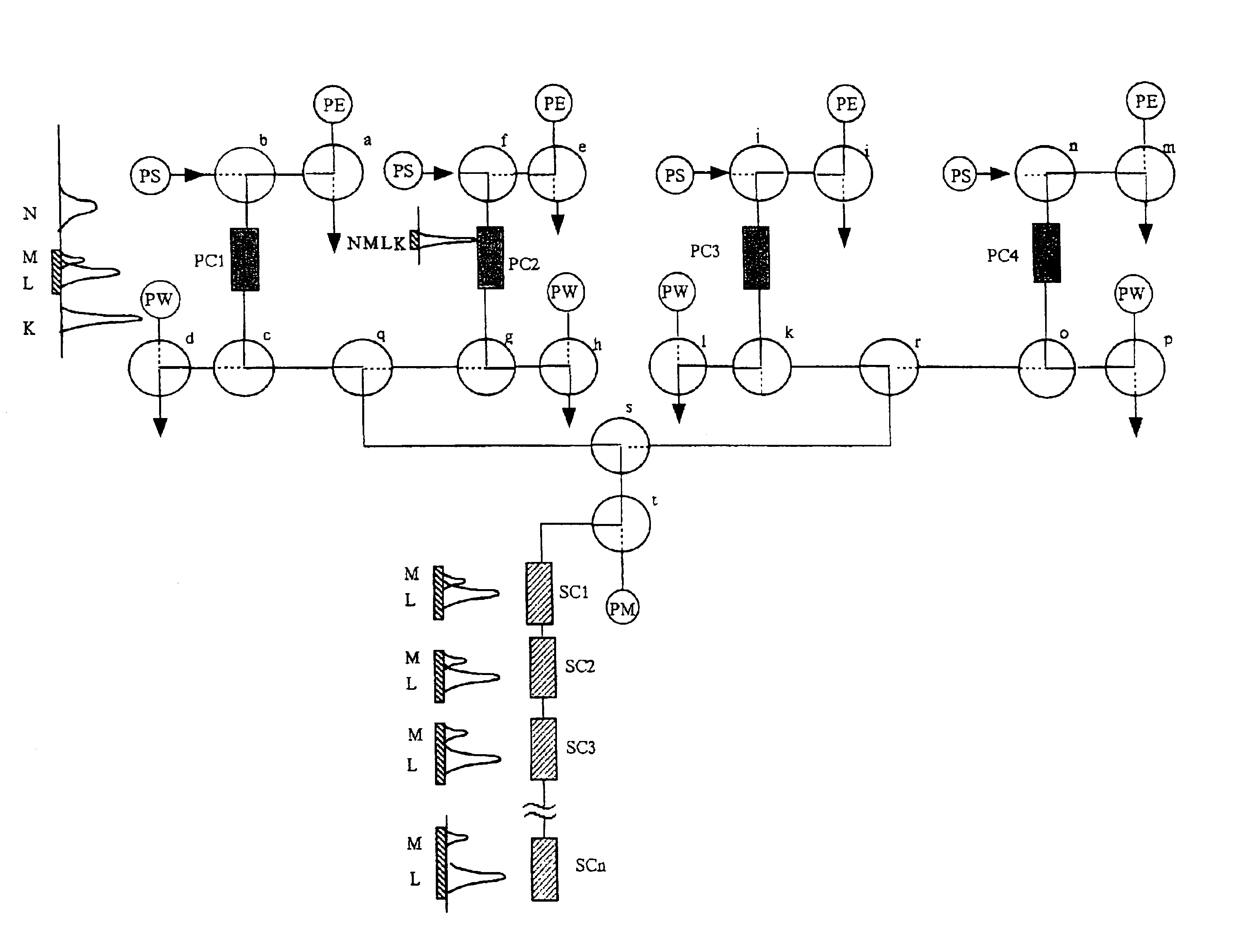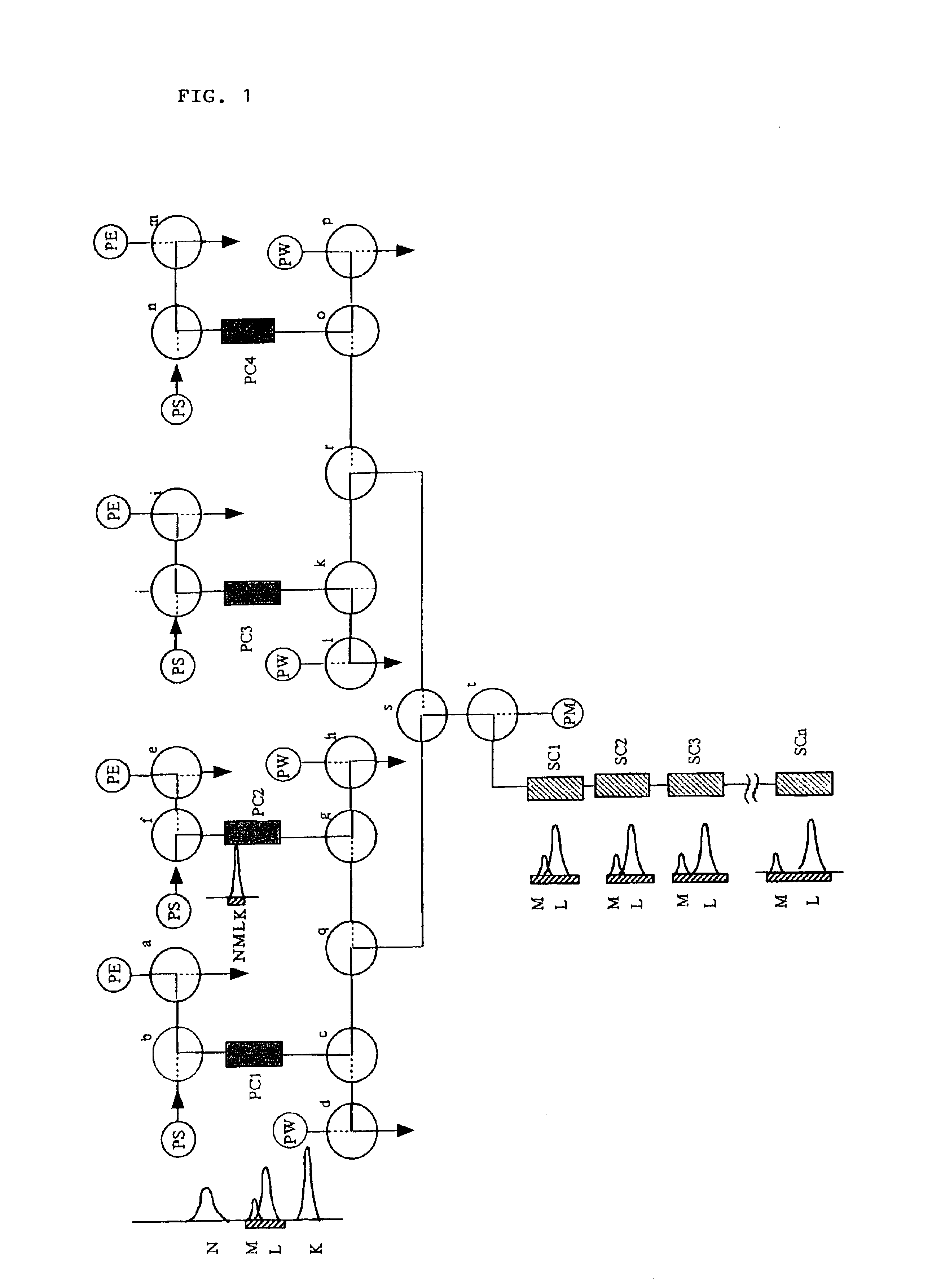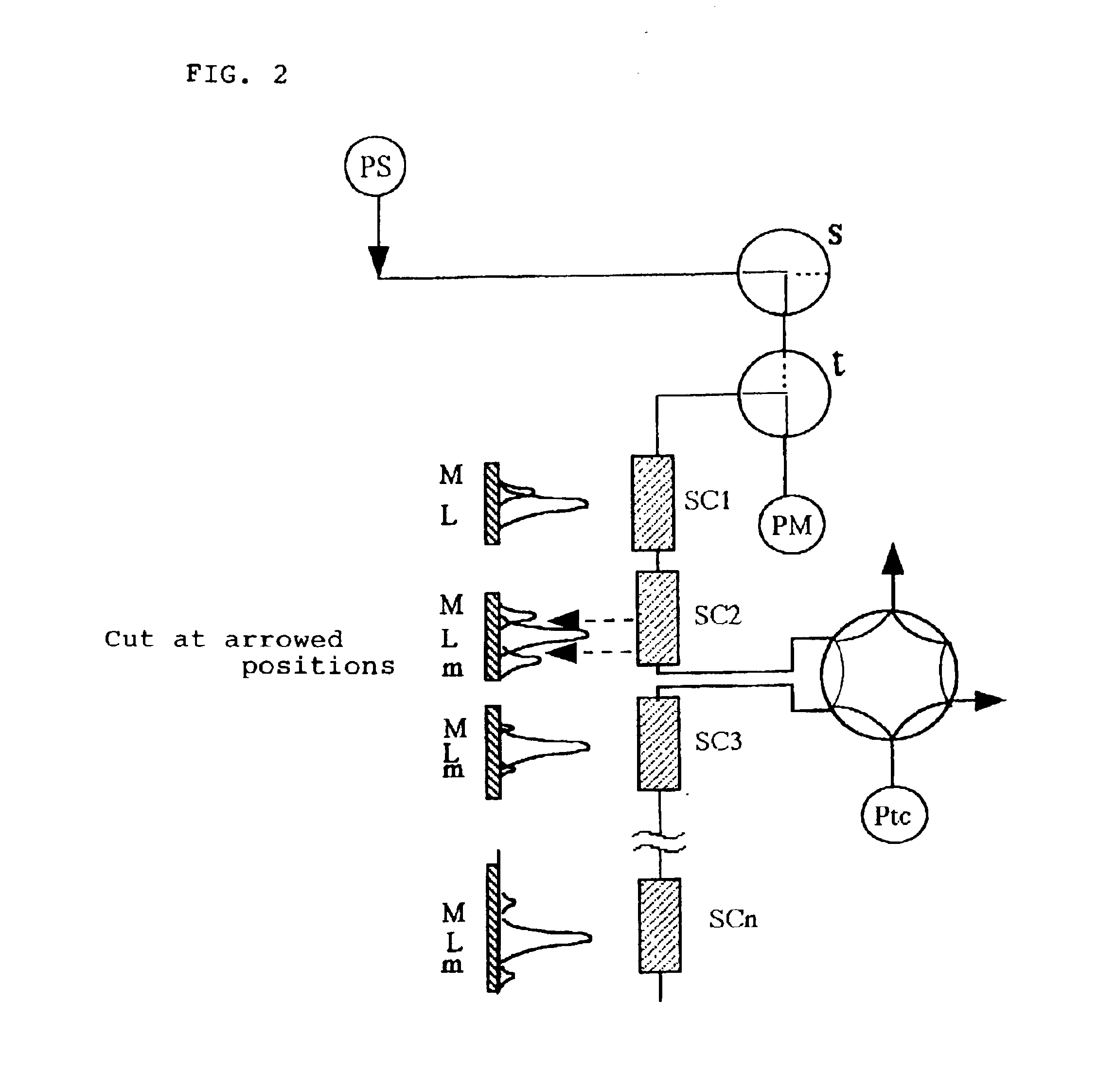Therefore, even when considering an analytical column with a size where the volume is in units of mL (or the weight of a packing material is in units of g), since several hundred liters of volume or several hundred kg of a packing material are required, it is not entirely practical.
However, when the whole surface area of the packing material is covered with the sample, it is obvious that sample in excess of this cannot be adsorbed on the surface, and for a low molecular weight molecule this is usually assumed at around 30 mg / 100 m.sup.2.
That is, when looked at from the point of view of separation, the part of the column where the target component has already passed through, and the part of the column where the target component has not yet passed through, are not only just occupying space, but also have the negative effect of imposing pressure that opposes the flow of the mobile phase to no purpose, without contributing to the separation.
However, in order to carry out a separation between components that only have a small difference in distribution coefficient, a column with a large number of theoretical plates, that is, a sufficiently long column is required, and in the case where a
high resolution is required the parts of the column before and after the target component that are not involved in the separation effect at a specific point in time cannot evade the drawback of being inevitably relatively large.
Another problem when applying
column chromatography to large-scale
fractionation is the issue of what form of column should be used for the packing material, which is several hundred times the amount of the target fraction, and as a second point, even if the required amount of a packing material is decided, what kind of particle size should be used for the packing material.
Therefore, carrying out separation under overload conditions is a technique that does not follow scientific logic, for which reproducibility is a prerequisite, and that is completely in the
trial and error range.
That is, carrying out a separation using a column under overload conditions means that the generalized rational logic of chromatography cannot be applied, and it cannot be said to be scientific.
However, since this was originally for making a counter-current state, the object thereof was to separate a mixture into two components as above, and it is not possible to take out one component from a mixture by this method.
For example, this method is used not only when a component other than the target of analysis is introduced into an analytical column, thus causing
contamination, but also when a component that is more strongly adsorbed on the packing material than the material to be analyzed and cannot be readily eluted after the analysis is completed is present in the mixture, with the object of shortening the long time that is necessary for washing and regenerating the column for the next analysis.
However, the application for multiple analyses with columns having the same high performance using a plurality of pretreatment columns is not considered.
Therefore, in this technique, reducing as much as possible a packing material that does not take part in the separation at a specific point in the time during the above-mentioned operations, that is, parts of the packing material In which no sample is present at a specific point in the time, which is one of the wasteful aspects of chromatography, and keeping as much as possible of the packing material of the system always involved in separating the sample, is a point of view that is lacking.
As hereinbefore described, up to now attempts have been made to make a variety of systems and methods for preparative
chromatographic separation and purification, but all of them have problems from the point of view of scale, cost or efficient performance.
However, even in this case, remains the drawback that the higher the resolution of the column used, the higher the ratio of the whole column a packing material necessary to the part where the separation of the target sample is actually taking place, so that there are many parts where the target sample is not present at a specific point of time during operation.
However, since components that are difficult to be separated from each other also often have similar physicochemical characteristics, because their capacity factors change in the same way with a change in the mobile phase, it is often difficult to change the
separation factor to a large extent.
Because of this, sample injection, and column washing and regeneration etc. are carried out on a short column system, and
high pressure operations employed in the usual HPLC are unnecessary.
Of course, if the frequency of
sample processing per unit time increases, the time for
processing one sample also naturally decreases, but when paying attention to one specific sample, it is not possible to avoid the
processing time being considerably longer.
However, even if it takes time to separate one specific sample, since a large number of samples are separated concurrently, separation conditions can be chosen that in the conventional method require a long time, which is disadvantageous or impossible.
Furthermore, since due to the particle size of the packing material the mobile phase flow rate cannot become slower than a certain degree, there is a limit to lengthening the column while reducing the flow rate.
Therefore, choosing
elution conditions in the vicinity of k'=2, which gives a good resolution per unit time, is not always possible in the usual process.
 Login to View More
Login to View More 


